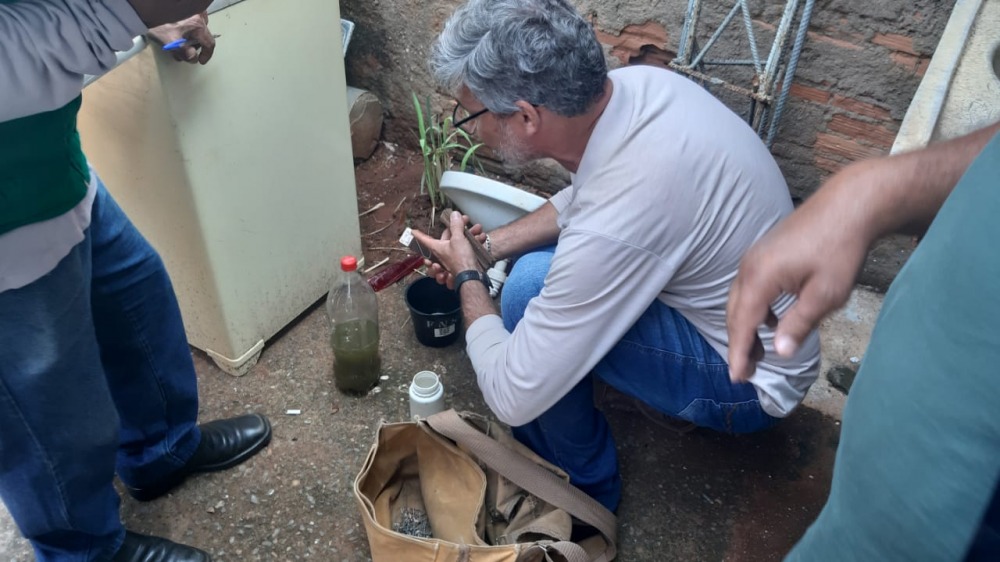A health professional sets up a trap to map Aedes aegypti. It simulates ideal conditions for mosquitoes to lay their eggs, with a container of standing water, which attracts mosquitoes (Photo: Stefania Nolasco)
About 80 specialists from 12 municipalities of Goiás, including technicians, coordinators and endemic disease control agents, participated in the training of the Goiás state insect control project. Aedes aegyptiOn Tuesday and Wednesday (29 and 30/08).
The ceremony was held at the UBV Center Goiás State Department of Health (SES-GO), in Bairro Santo António, is an important step towards implementing the initiative that aims to monitor vector densities and guide actions to control the spread of mosquitoes that transmit dengue, Zika and chikungunya.
Insect monitoring project Aedes aegypti It is the result of a partnership between SES-GO, the Ministry of Health (MS) and the Oswaldo Cruz Foundation (Fiocruz), the foundation that developed the egg-laying trap, technically called egg-laying traps.
The coordinator of Environmental Monitoring and Vector Control of SES-GO, Maristela dos Santos Sassi, reports that the municipalities selected to implement the pilot project were selected according to the technical criteria defined by Technical Notes 33 and 37 of the Ministry of Health.
Among these criteria are the infection rates, the number of reported dengue cases, the availability of infrastructure and, above all, the interest of the municipal health departments in project implementation and implementation.
interrupts
The municipalities selected for the pilot project entered into an agreement with SES-GO during the meeting of the Bilateral Committee of Directors. They are Ionia, Bureti Alegre, Caldas Novas, Campos Bellos, Guiatuba, Inasiolandia, Iborra, Jovania, Palmeiras de Goias, Panama, Rio Verde and Uruaco.
Maristella Sassi points out that the representatives of the municipalities obtained the materials provided by the Ministry of Health to implement this technique. The implementation of the project is expected to start on the first of September.
According to the coordinator, the egg-laying traps simulate ideal conditions for mosquitoes to lay their eggs. It consists of a container with standing water that attracts mosquitoes, and a wooden straw that facilitates the laying of eggs by females.
The Technical Adviser for the General Coordination of Anti-Retroviruses at the Ministry of Health, Ricardo Augusto dos Passos, confirms that technicians have been trained in several Brazilian states. He notes that the egg-laying trap is a complementary strategy to other strategies developed to control arboviruses.
“This is a simple, cheap, easy-to-use, and very sensitive egg-collecting trap,” he notes. He also notes that egg traps have shown important results in mapping oviparous infestations Aedes.
Fiocruz researcher José Pinto Pereira Lima confirms that the use of the trap is intended to improve the vector control system. “By identifying critical areas, we were able to improve control and reduce the spread of disease vectors, thus reducing cases of dengue, chikungunya and Zika.”

“Wannabe internet buff. Future teen idol. Hardcore zombie guru. Gamer. Avid creator. Entrepreneur. Bacon ninja.”

